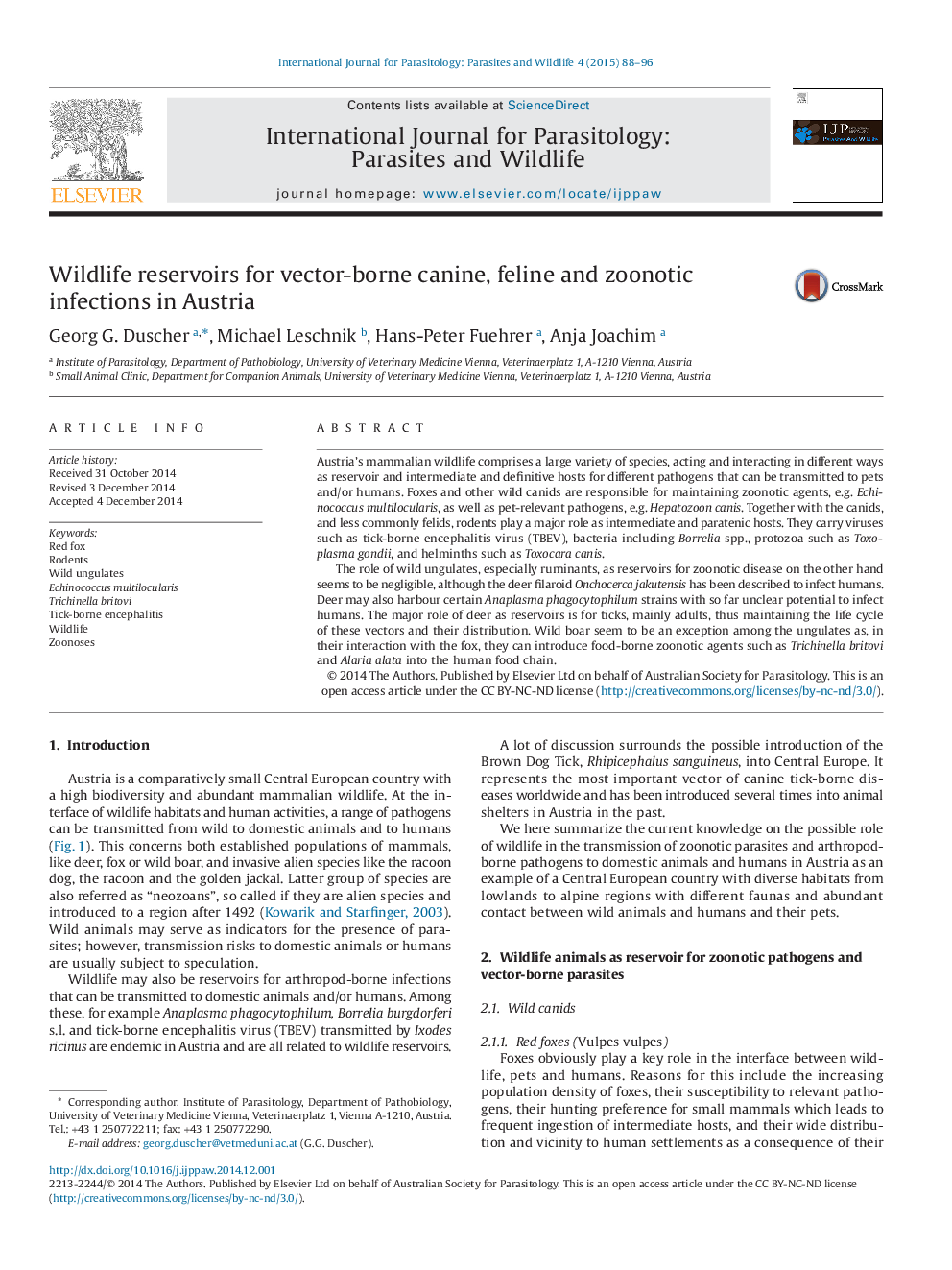| کد مقاله | کد نشریه | سال انتشار | مقاله انگلیسی | نسخه تمام متن |
|---|---|---|---|---|
| 2055172 | 1075732 | 2015 | 9 صفحه PDF | دانلود رایگان |
• Wild canids of Austria harbour pathogens, e.g. Echinococcus multilocularis.
• Rodents are the key factor as reservoir and intermediate and paratenic hosts.
• Wild boars provide an interface for transmission.
• Host distribution and density influence the risk of infection for pets and humans.
Austria's mammalian wildlife comprises a large variety of species, acting and interacting in different ways as reservoir and intermediate and definitive hosts for different pathogens that can be transmitted to pets and/or humans. Foxes and other wild canids are responsible for maintaining zoonotic agents, e.g. Echinococcus multilocularis, as well as pet-relevant pathogens, e.g. Hepatozoon canis. Together with the canids, and less commonly felids, rodents play a major role as intermediate and paratenic hosts. They carry viruses such as tick-borne encephalitis virus (TBEV), bacteria including Borrelia spp., protozoa such as Toxoplasma gondii, and helminths such as Toxocara canis.The role of wild ungulates, especially ruminants, as reservoirs for zoonotic disease on the other hand seems to be negligible, although the deer filaroid Onchocerca jakutensis has been described to infect humans. Deer may also harbour certain Anaplasma phagocytophilum strains with so far unclear potential to infect humans. The major role of deer as reservoirs is for ticks, mainly adults, thus maintaining the life cycle of these vectors and their distribution. Wild boar seem to be an exception among the ungulates as, in their interaction with the fox, they can introduce food-borne zoonotic agents such as Trichinella britovi and Alaria alata into the human food chain.
Graphical AbstractFigure optionsDownload as PowerPoint slide
Journal: International Journal for Parasitology: Parasites and Wildlife - Volume 4, Issue 1, April 2015, Pages 88–96
